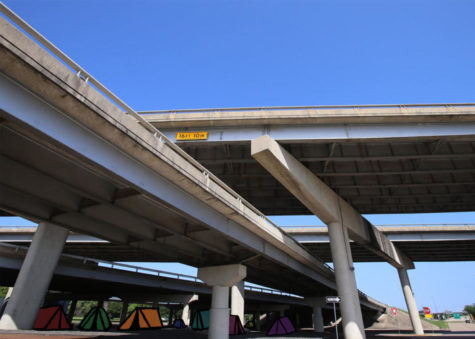OPINION | Current homeless relocation programs are not effective enough

Homelessness, a crisis that affects over half a million Americans, has been made even more difficult to survive in light of the ongoing pandemic. As COVID-19 may be even more dangerous to homeless people, who already face an increased risk of medical problems, it becomes all the more urgent to support people who lack housing. But how can this problem be addressed?
Given that several cities have begun clearing out camps of homeless people, one suggestion is that these people be relocated. Certain cities have offered homeless people buses to other locations, some taking riders thousands of miles away from the place they boarded. According to Jeff Weinberger, co-founder of the Florida Homelessness Action Coalition, these programs are not as benevolent as they may appear.
“Once they get you out of their city, they don’t really care what happens to you,” Weinberger, in an interview with the Guardian, said.
Such criticism could be applied to other relocation programs as well. In situations where little to no aid is provided, such as when camps of homeless people are forcibly relocated to make room for a dog park, the question of where homeless individuals can go remains unanswered. Even with the aid of nonprofit organizations, the city of San Jose, California will likely be unable to meet its June 30 deadline to clear out homeless people from a future park’s site.
Fortunately, dispersing camps and bussing people away are not the only solutions to this problem. Cities such as Los Angeles agreed to finance the construction or acquisition of 10,000 units specifically to house homeless people. Such programs address issues that may deter homeless people from accepting relocation via bus — namely, it provides housing and allows them to stay much closer to the area they’ve already been residing in. On a larger scale, it also treats homeless people more like human beings, as opposed to a problem which is offloaded and abandoned.
Given that a major critique of bussing programs in particular is that they leave homeless people vulnerable to the trauma of being homeless in an unfamiliar location, providing housing may be a better option. Unfortunately, it also demands a substantial amount of money, time and land. Such a heavy financial burden may deter governmental organizations from pursuing such relief. Perhaps that is why cheaper relocation programs — some voluntary, some not — are pursued with greater frequency.
A silver lining, however, is that local organizations are available to help. In Seattle, Tent City 3 — the city’s only sanctioned homeless encampment — is currently located on the front lawn of Phinney Ridge Lutheran Church. According to the church’s Deacon of Outreach, the neighborhood was “overwhelmingly supportive” of Tent City 3’s presence. Local support and yearly donations — including $80,000 from the Seattle City Council — allow the city’s continued survival.
But not every homeless person is able to find such support from their community, and efforts to deposit them in a new one have as much potential to harm as they do to heal. For a relocation program to contribute to solving the problem of homelessness, as opposed to hiding its victims, more work must be done. Given that providing housing is a logistical and financial undertaking many cities may opt to avoid, relocation efforts should instead take greater pains to provide relief and support beyond physically moving an individual. While Americans glorify pulling ourselves up by our bootstraps, such an attitude shouldn’t deter us from helping others to their feet — however much we can.
Your donation will support the student journalists of Tulane University. Your contribution will allow us to purchase equipment and cover our annual website hosting costs.



